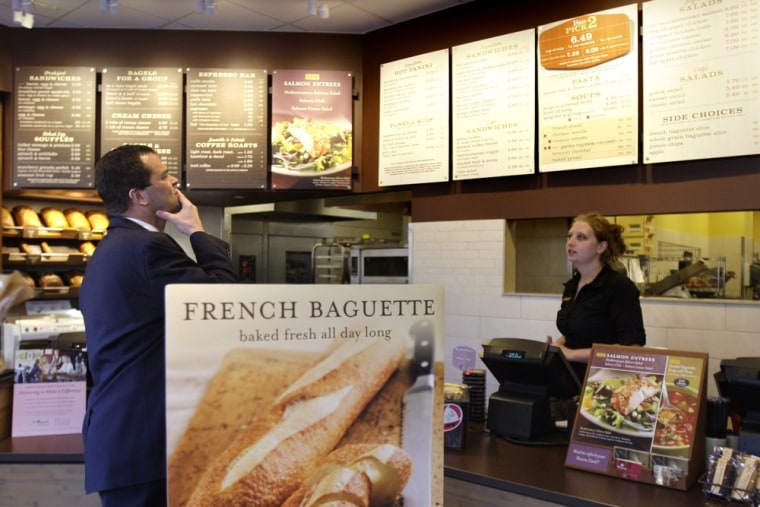Panera Bread's latest pay-what-you-can experiment will be retooled and brought back next winter as a seasonal offering rather than a permanent one, the chain's founder says.
The Meal of Shared Responsibility was pulled Wednesday. Since late March, Panera had offered a single menu item, Turkey Chili in a Bread Bowl, at its 48 St. Louis-area restaurants. Customers set their own price for the purchase, though the suggested retail price (tax included) was $5.89.
The idea was that the needy could get a nutritious 850-calorie meal for whatever they could afford to pay, while those who pay above the company's cost make up the difference.
The suburban St. Louis-based company served 15,000 of the meals, Panera's founder and chairman, Ron Shaich, said in an interview with The Associated Press. But the experiment found flaws: Few needy people were participating, in part because most Panera locations in the region are in middle-class and affluent areas; and after an initial surge of publicity and marketing, awareness about the meal dropped off.
"We were very capable of raising the level of awareness about food security in short spurts," Shaich said. But as in-store marketing about the meal was replaced and employees stopped explaining the concept to customers, "it seemed to fall into the background."
"We decided the best thing to do is pull it and retool it," Shaich said.
Fresh off media coverage on the launch, and with heavy in-store signage and employees explaining how the meal worked, the idea had a rousing start. Customers for the first three weeks were, on average, paying above the retail value, said Kate Antonacci, director of societal impact initiatives for Panera's charitable arm, the Panera Bread Foundation.
The payments dropped off, though, as marketing was scaled back, with the overall average being around 75 percent of retail value.
Panera hasn't decided specifically when the meal will be brought back next winter. Shaich said it will be rolled out in a select market or markets that have not been determined. This time, it will be a special offering, probably for four to six weeks.
"We'll be very upfront where we can pay it forward and help each other," he said.
Panera has other charitable endeavors. Its Operation Dough-Nation program has donated tens of millions of dollars in unsold baked goods.
In 2010, it opened an entire cafe in the St. Louis suburb of Clayton, Mo., that operated under the pay-what-you-can format. Others followed in Dearborn, Mich., Portland, Ore., Chicago and Boston. At those nonprofit cafes, every menu item is paid for by donations. Antonacci said roughly 60 percent of customers pay the suggested retail price. The rest are about evenly split between those who pay more and those who pay less.
Panera Cares cafes generally bring in 70 to 80 percent of what the traditional format stores do, Antonacci said. That still provides enough profit for Panera to offer a job training program run through the cafes.
More business news:
